- Solutions
- For Industry
- By Need
- Products
- VarbaseEnterprise CMS Distribution for Drupal
- Uber PublisherEnterprise Digital Media Platform Builder
- VardocDrupal Knowledge Base Platform
- Campaign StudioOpen Marketing Platform - by Acquia
- Open SocialSocial Business Platform - by Open Social
- Services
- Strategy
- Design
- Development
- Migration
- Support and MaintenanceSupport and Maintenance
- DevOps
- Digital Marketing

Datasheet

- Clients
- Ideas
- About
- Contact Us

10 Web Development Trends in 2022-The Future of Web Development

Since its advent in 1983, the internet has witnessed evolving trends in terms of web development. As the worldwide web increased its population of active users to 5 billion, the concept of website development also revolutionized.
While it's nothing new given the extensive globalization, web development trends in 2022 have started evolving quickly in the post-pandemic years from being limited to blogging and content, websites’ developers have shifted focus to enhancing the user experience with sophisticated technology.
With the 1.58 billion websites on the internet, there is always newer and more advanced technology when it comes to web development. The dynamic web infrastructure has made it challenging for many companies and businesses to keep up in terms of website performance and user experience.
If you wish to stay ahead in the competitive digital market, make yourself adaptive to the latest technology in web development. Incorporating the latest trends into your website's framework will give you a competitive edge in your respective business niche. However, not everyone can keep up with the futuristic tech trends making their way through the web development fabric in 2022.
10 Major Web Development Trends To Check Out in 2022
To facilitate you in building a better online foothold, we have gathered the top 10 web development trends you can anticipate in 2022:
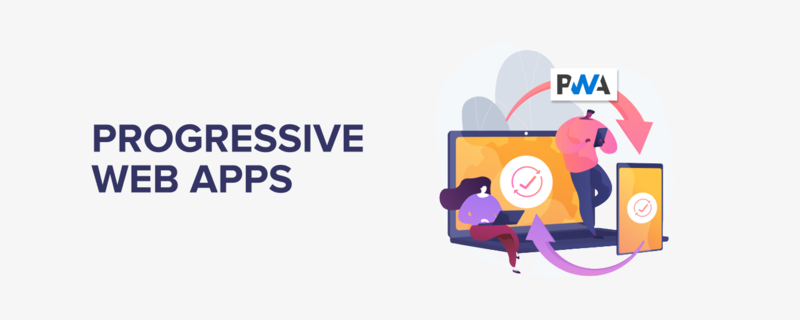
1. Progressive Web Applications (PWAs)
Progressive web applications (PWAs) are advanced versions of web applications featuring faster loading speed, offline operations, and a mobile-centric app experience. Although the technology has been around for a while, PWAs have yet to make the boom in the web development industry.
Since 90% of the global internet population uses mobile phones to access online websites, it's high time to incorporate PWAs to entertain a larger audience and enhance user experience.
Perks of PWAs:
- Hassle-free installation.
- Minimum storage and power consumption.
- Seamless maintenance and updating.
- Fewer development expenses.
Considering how major companies like Uber, Starbucks, and Twitter have adopted PWAs, experts believe PWAs will replace typical mobile applications in the future. Today, HTML, CSS, and JavaScript have become standard gateways for developing PWAs. These programming languages have made it easier to access users' cache offline, thus ensuring a better digital customer experience.

2. AI-Enabled Chatbots
AI appears to be a fundamental aspect of steering and nurturing web development trends in the future. In 2022, artificially intelligent technology will become more sophisticated and self-learning to understand user behavior better. Using machine learning and natural language processing, AI can cater to users' demands and requirements without human intervention.
AI-enabled chatbots can help companies create a winning digital customer journey by solving customer queries and issues effectively. Many B2C companies and tech giants like Skype have integrated AI chatbots into app modules to ensure a seamless user experience.
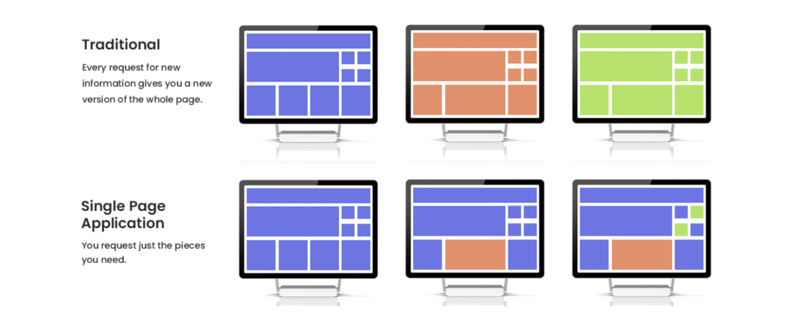
3. Single Page Applications (SPAs)
Among the various web development trends, 2022 brings, single-page applications (SPAs) have gained significance. This web application opens an HTML webpage as soon as you open the website, which eventually loads content without requiring users to refresh the site on their browser. Users can have a refined and uninterrupted web experience on websites that incorporate SPAs into their framework.
SPAs operate on the front-end JavaScript frameworks, including Ember, Vue, and Angular, making the websites more responsive and user-centric. Platforms such as Google, Facebook, and Twitter have already incorporated SPAs in their developing frameworks. The advantages of using SPAs include:
- Offers online support to the webpage.
- Hassle-free navigation on site.
- Simple and cost-effective development.
- Provides a simplified and efficient web experience.

4. Accelerated Mobile Pages
As the name suggests, accelerated mobile pages (AMPs) accelerate webpage performance, providing users a prompt web experience and retaining traffic. Google initially released the technology in 2015 to make the online web experiences more user-centric.
AMP functions just like PWAs when it comes to making websites mobile-responsive and convenient to access. AMPs also feature a simplified design layout that displays basic content and features. Since users cannot access the entire scope of web products, many websites still rely on native applications to retain the traffic inflow.
Despite a decrease in the AMP adoption rate in the last two years, 32% of all the mobile technologies worldwide still use accelerated mobile pages. This is because AMP-integrated websites have a higher conversion rate by lowering bounce rates on the site and providing an uninterrupted user experience.
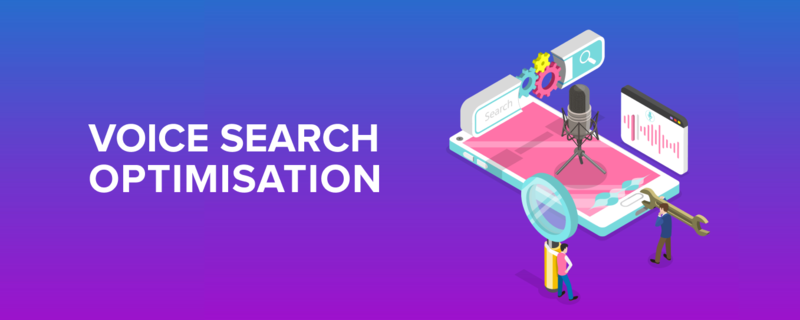
5. Voice Search Optimization
Although Google was the first one to introduce Voice Search Optimization technology in 2011, its popularity picked up pace years later. Moving past the text-based search, optimized voice search technology has significantly impacted web development.
In recent years, the success of virtual assistants like Google's Alexa and Apple's Siri proves that voice search will be the next big thing in web development. As more companies flood the voice recognition market, the sales numbers will rise to $27.16 billion by 2026.
Considering the popularity of recent market entrants in the category of Google Home and Apple HomePod, researchers claim that by 2022 voice assistants will be adopted by 55% of households worldwide.
In addition to conducting voice searches through smart speakers, people now use IoT devices and even smartphones to make a browser search. It is only a matter of time until voice searches start ranking on the browser algorithm. Thus, as a website owner, you should integrate voice search into the site's technical SEO layout before it gets too late.

6. Motion UI
While faster loading speeds and mobile-oriented web pages create better digital experiences, the layout design captures users' attention. Creative visual design is another fast-paced web development trend adopted by startups and large-scale companies. With users demanding smooth but appealing online experiences, the Motion UI gained popularity with its impactful UI/UX design.
Motion UI is a front-end technology that integrates custom animation and motion elements onto a fully responsive website framework for an eye-catching and interactive experience. Instead of transforming the backend infrastructure of a website, the creative technology supports motion designs in a native website setting.
While Motion UI has been in the market since 2018, SASS library technology has widened its accessibility metrics by making it compatible with all web technologies.

7. Internet of Things (IoT)
IoT is one of the most vital tech trends to dominate web development in 2022. The continuous data transfer between IoT-connected devices enables users to access and control different devices from their mobile phones.
The technology set up advanced communicative links between websites and functional devices like cameras, sensors, and signal emitters. The connection enables convenient access to all devices and helps fix any communication issues. IoT allows companies to connect and interact with them, providing them with a personalized experience.

8. Serverless Architecture
Serverless architecture operates on a cloud technology where developers can execute code virtually for different backend services and web applications. The virtual servers do not require periodic maintenance, management, or upgrade. This significantly reduces system overloading, development costs, and data losses, allowing web applications to scale without compromising security.
While big companies like Google, Microsoft, and Amazon have already adopted serverless architecture modules, more are expected to follow. Researchers believe that the global market size for serverless architecture will rise to $21.1 billion by 2025. With the onset of 2022, the technology will make its way into IoT apps and chatbots for downloading file backups and sending notifications.
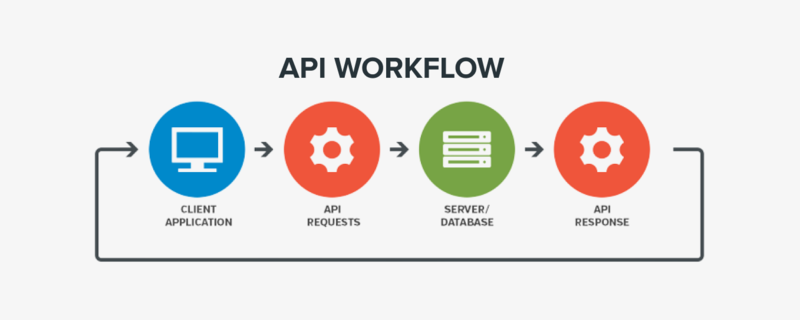
9. API-First Development
As of 2022, the newly programmed web applications cater to users' needs and provide them with a first-class digital experience. The API-first development approach allows developers to write and execute the code onto the website while users are accessing it. While it speeds up code delivery on the site, the API-first approach also cuts short development expenses.
The reasons why the API-first approach is an in-demand web development trend are:
- High adaptability.
- Low development costs.
- Client-centric website experience.
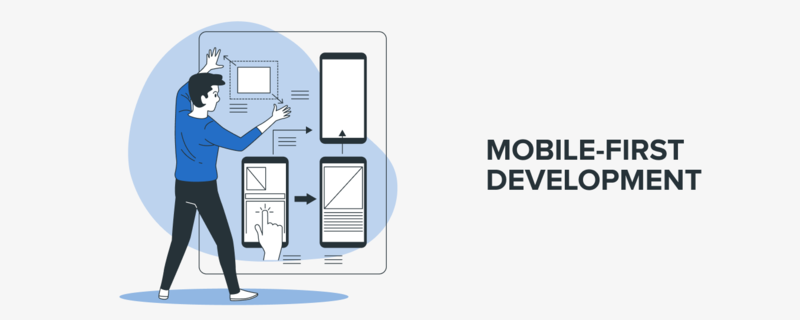
10. Mobile-First Development
With the rising smartphone ownership rate and a major source of online traffic worldwide, mobile-first development has become one of the most prevalent web development trends in 2022. As per a research study, more than 75% of the e-commerce sales globally were conducted through smartphones.
The mobile-centric trends have pushed developers to prioritize mobile-first web application development. Developers incorporate single-click purchasing and biometric authentication for payment procedures to provide a personalized experience to the customers.
The Future of Web Development
With the fast-changing internet trends, people always have a question: ” Is web development still in demand?” or ” what is the future of web development?” Considering how artificial intelligence and machine learning are taking over different industries, the question seems justified but still far-fetched to some point.
Although web development is on an ever-changing track, human creativity and intelligence have steered it this far. Besides, there's still much room for improvement before we can sit back and let AI take over the internet. While we may have an idea about the upcoming web development trends, it's hard to predict what the future has in store for us. If you keep yourself aligned with the revolving trends and continue learning new things, you'd hardly need to worry about the future of web development.
Wrapping Up
The ideas, methods, and trends for web development have never been the same since the inception of the internet. The practice of web development has evolved to provide a customized online experience tailored to users' demands and expectations. In this continuously changing ecosystem, you must stay up to date and embrace new ideas from innovative interactive user interfaces to fast-functioning online web pages and mobile-first applications.
- Web Development
- Web Development Trends
- Future of Web Development



